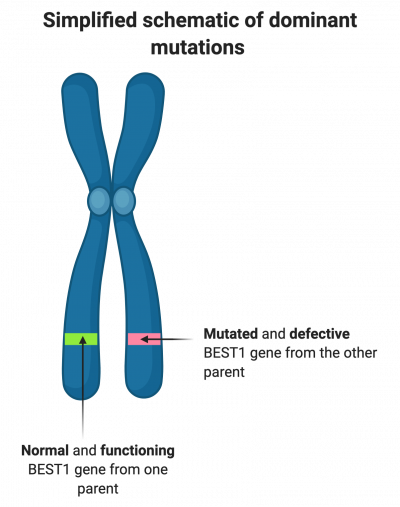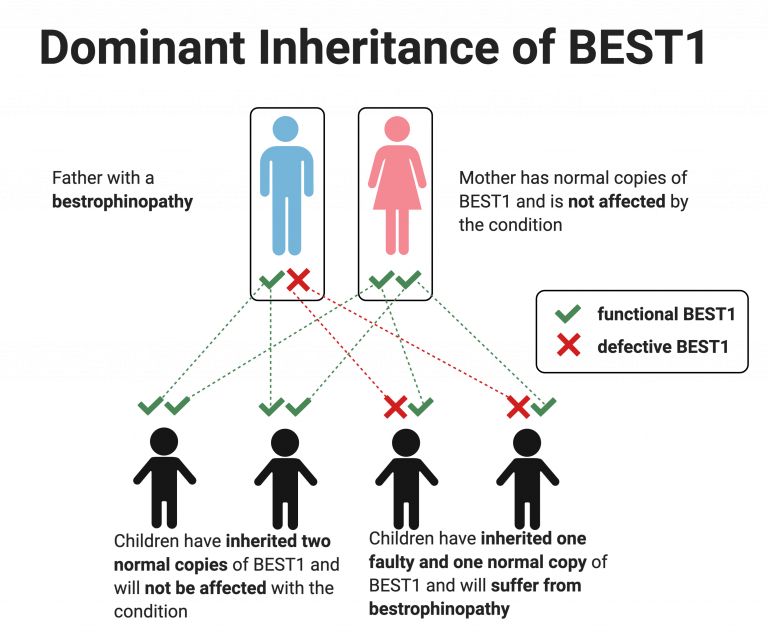Dominant disease occurs when only one mutated copy of a gene causes disease.
We inherit two copies of the BEST1 gene, one from our mother and one from our father. In dominant disease, the presence of one copy of a defective gene causes disease, this defective copy can be inherited from the mother or the father. Both copies of the gene make protein, however the mutated gene, inherited from one parent, now makes a protein which overrides or interferes with the normal copy of the protein inherited from the other parent, leading to the term dominant mutation. The mutated protein could have a completely different role in the cell, work in the wrong place, or change the physical structure of the BEST1 channel.

In this dominant disease scenario, the parent who passed on a copy of the defective gene would also be affected with a bestrophinopathy whereas the other parent would have two functioning copies of the BEST1 gene and not be affected with the condition. When looking at inheritance of the mutation, the couple would have a 50% chance of having a child with bestrophinopathy, as the mutated copy from the affected parent can be passed on in only two scenarios. The image below shows this schematically:

Best disease, AVMD and ADVIRC follow a dominant mode of inheritance. However, inheriting a dominant mutation does not necessarily mean that the child will have the disease, or the same disease progression as the parent. Complete penetrance of the condition occurs when all individuals affected with the mutation have the condition, yet, bestrophinopathies can also exhibit incomplete penetrance where not all individuals with a dominant mutation show symptoms of disease. Likewise, variable expressivity could also occur where patients inherit the same mutation but have differing types of disease. Therefore, dominant diseases are not always as simple as the above schematic makes it out to be!
 Close
Close

